London Open Gardens: Inside the home and garden of William Morris, Hammersmith
Posted by SECRET GARDENER
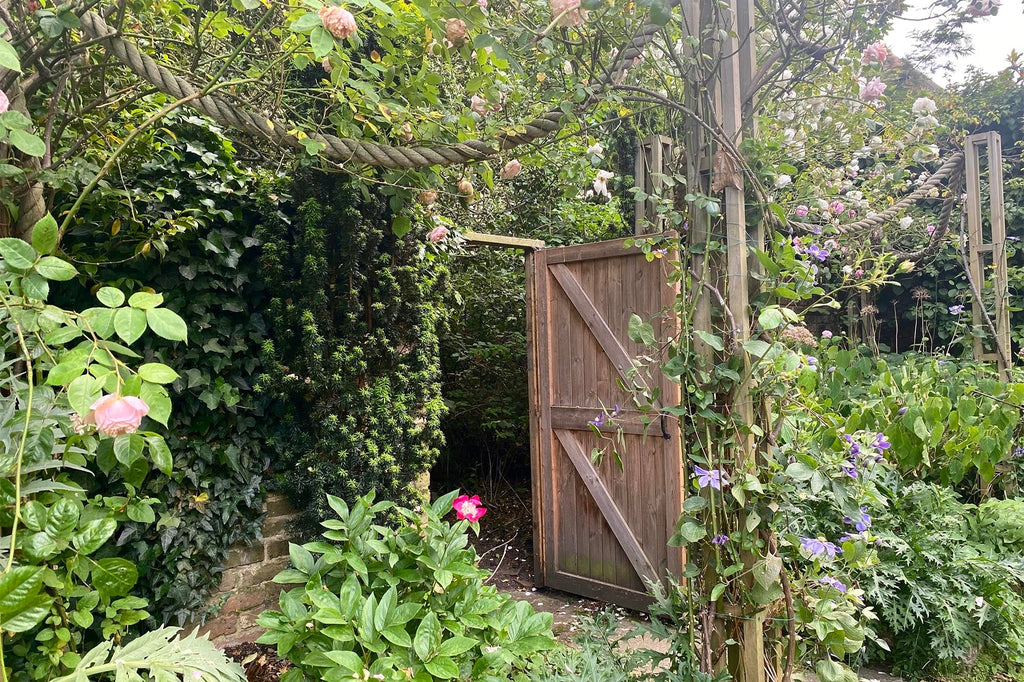
A glimpse into the home and garden of William Morris during London Open Gardens weekend
London Open Gardens is an annual event that opens the gates to over 100 of the city’s most remarkable and privately owned green spaces for a weekend, allowing visitors to explore an array of gardens usually hidden from public view.
Organised by the London Parks and Gardens Trust, this event offers a rare opportunity to discover London’s hidden gems. From the historic garden of 10 Downing Street to the contemporary rooftop of 25 Cannon Street, London Open Gardens showcases the richness of the horticultural wonders which thrive within our city. Whether you’re drawn to the serenity of a secret garden or the impressive architecture of London’s more modern outdoor spaces, this event is a delight for all.
***
The Legacy of Kelmscott House and William Morris
Along the banks of the River Thames near Hammersmith Bridge lies Kelmscott House, a Grade II* listed, beautiful Georgian brick mansion with historical significance - it was once the home of renowned artist and designer William Morris, from 1878 until his death in 1896.
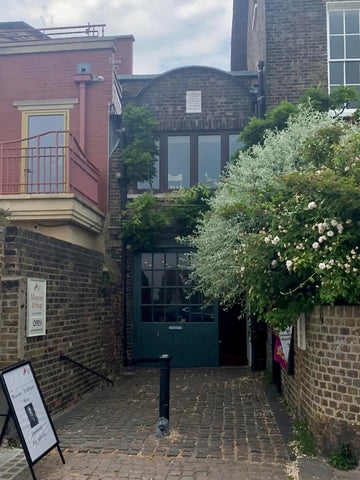
Above: the William Morris Society is housed in the Coachhouse of Kelmscott House
Today, Kelmscott House is home to the William Morris Society, a charity dedicated to sharing knowledge of the life and works of its namesake. A museum of Morris’ work and practice is open to the public on select days of the week in the basement and Coach House (originally used as a stable in the 1800s.)

Above: exhibits of William Morris & Co's work on display at the William Morris Society
Alongside exquisite pieces of his work, one of the treasures on display is the original Albion printing press used to produce Morris’ last great creation with Kelmscott Press, Chaucer, the only printing press used by Morris to remain in the country. During its time, Kelmscott Press produced limited-edition, meticulously crafted books that paid homage to the art of printing before the industrial era.
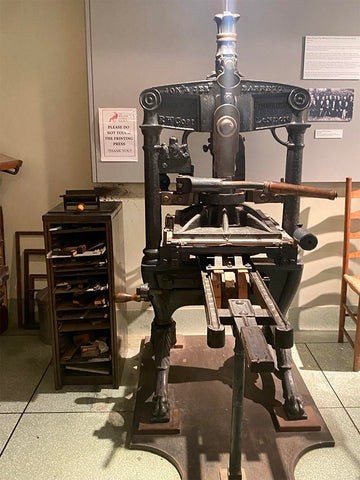
Above: the original Albion printing press on display in Kelmscott House
Exploring the garden of Kelmscott House
The garden is now divided between the tenants of the private residence next door and the William Morris Society, who maintain the walled garden. We had the opportunity to explore this hidden garden as part of London Open Gardens weekend.
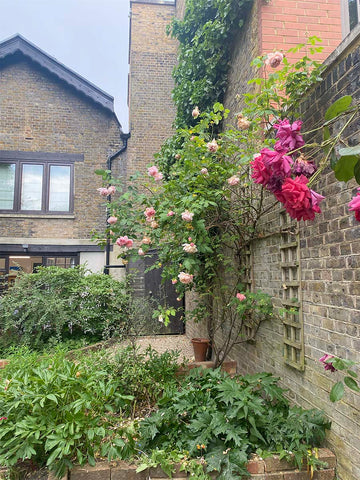
Above: the walled garden by the basement of the Coachhouse is maintained by the William Morris Society
Morris lived in Kelmscott House for the final 18 years of his life, and its large garden was a key selling point in his decision to move there. In a bid to convince his wife Jane to move there, he described the garden in a letter to her as “really the most beautiful…the situation is certainly the prettiest in London…” At the time, the garden was considerably larger at a quarter of a mile in length, but was reduced in the 1960s when the A40 road was constructed.

Above: beautiful roses in the garden of Kelmscott House
In his letter, Morris relates that the garden has a walnut tree, a fine tulip tree, several horse chestnuts, many fruit trees in the orchard, and a kitchen garden with raspberries. Roses, Japanese anemones, Foxgloves, and Hollyhocks are some of the flowers which grew in the gardens of Kelmscott House when William Morris lived there.
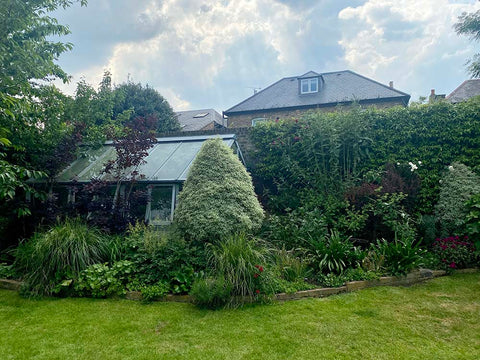
Above: the borders of the garden at Kelmscott House, occupied by private residents
As we walk around the garden today, it’s the start of the summer months and the roses are in full bloom, growing along a length of trellis and on ropes hanging by the garden gate. A green beetle takes refuge in the delicate white flowers of the deciduous Philadelphus at the back of the walled garden, its scent heavy in the air before the summer rain.
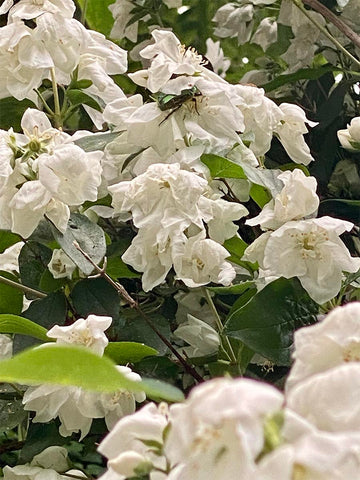
Above: a beetle crawls through the flowers of the Philadelphus in the walled garden
Roses, with their intricate petals and rich symbolism, were a favoured motif of Morris and featured prominently in many of his textile patterns. The romantic and naturalistic qualities of roses aligned with Morris’ design philosophy, which celebrated the integration of art and nature.

Above: a variety of roses grow along trellises in the garden of Kelmscott House
His designs often showcased the complexity of the rose’s petals, thorns, and leaves, capturing the essence of the flower in its entirety. A notable example of this is “The Trellis” design, featuring intertwined rose vines against a trellis background, with birds perched amongst the branches.
William Morris textile designs produced in Merton Abbey Mills
As one of the founders of the Arts and Crafts movement, Morris is well-known for his textile designs. Seeking to restore the revered methods of hand-crafts, he designed many prints to be hand-produced for embroidery and fabric.
In 1881, whilst residing at Kelmscott House, Morris set up new workshops in Merton Abbey Mills, by the River Wandle. Its waters were so clear that it also later attracted Arthur Liberty to its shores, who also conducted printing textile at Merton Abbey Mills.
The River provided a source of water, and the large meadows allowed for dyed fabrics to be dried. The area is still a home to crafts, with artists and makers setting up trading stalls at the weekend. The watermill on the Wandle at Merton Abbey is the only wheel remaining in full working order, and dates from 1885. It was used by Liberty to rinse the gum from printed silk. Today, the waterwheel is used to turn the potter’s wheel of the ceramist whose workshop resides there, and is free to visit to the public.
Find out more about the area and its green spaces on our #SecretGarden blog.
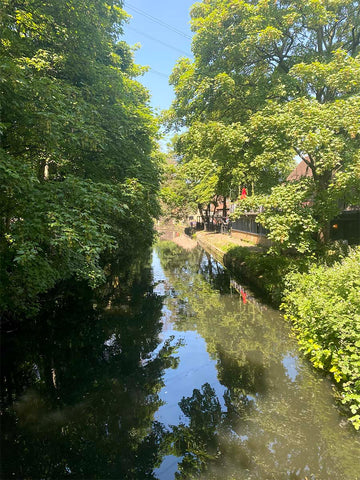
Above: The River Wandle at Merton Abbey Mills
“In great towns, gardens, both private and public, are positive necessities if the citizens are to live reasonable and healthy lives in body and mind”
William Morris, Making the Best of it, 1880
***
London Open Gardens took place between 10-11 June 2023. Funds from ticket sales support London’s Parks and Gardens and enable the charity to protect London’s green spaces throughout the year.
The William Morris Society works to preserve Morris’ legacy in Kelmscott House, and ensure his works and contribution to art and design will remain remembered.
How to get to The William Morris Society at Kelmscott House
The William Morris Society,
Kelmscott House,
26 Upper Mall,
Hammersmith W6 9TA
Travel: Nearest underground stations are Hammersmith or Ravenscourt Park
Entry: Free (please note the main part of Kelmscott House and Garden is privately owned and not open to the public)
Opening times: Open Thursday-Sunday, 10am-4pm (last entry at 3.30pm). Visit the William Morris Society website for up to date opening hours and exhibition information.

